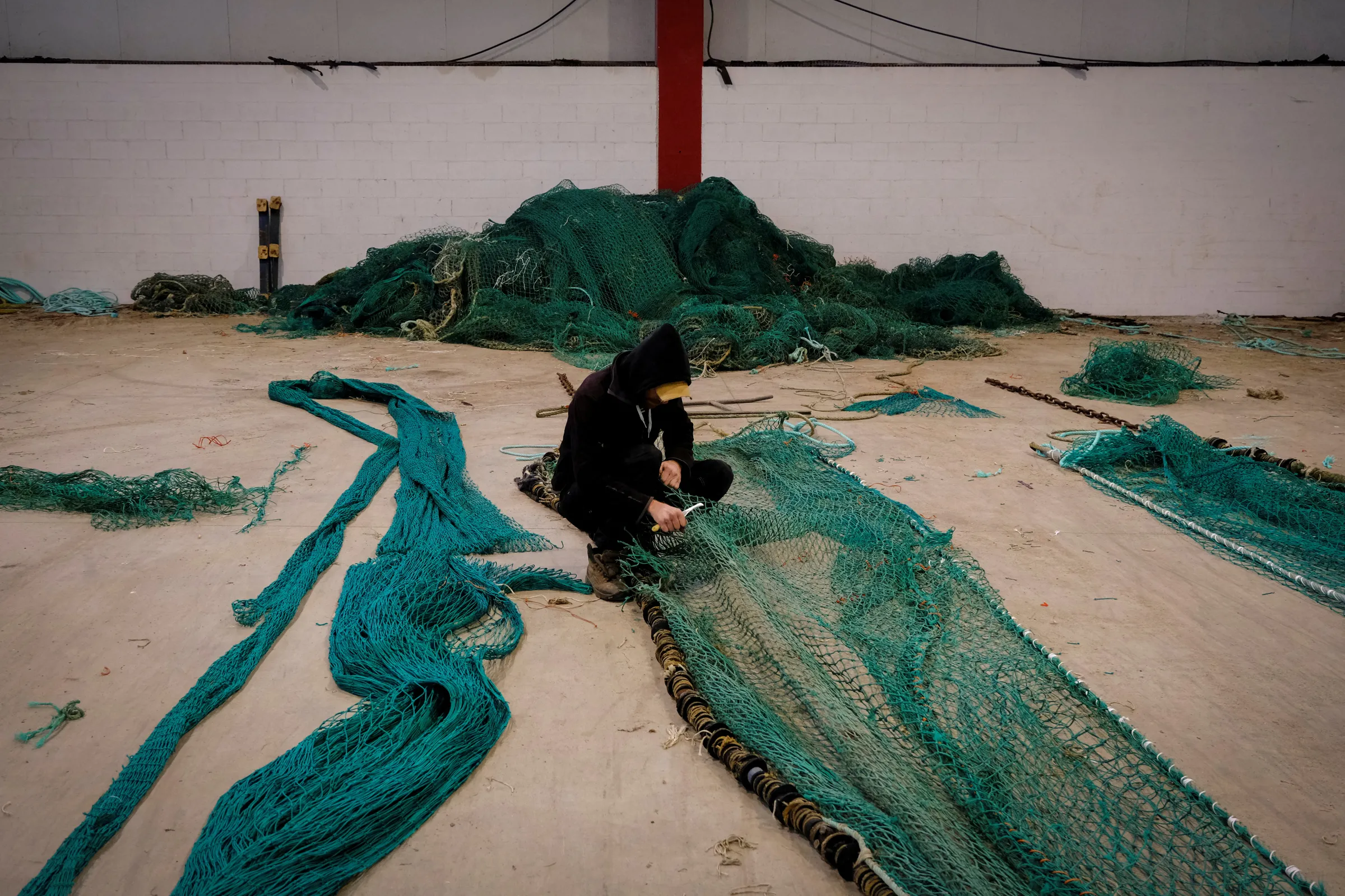What is bottom trawling and how does it harm oceans?

A man cuts and sews nets authorized to operate at depths on trawlers in Galicia, Spain, December 1, 2023. REUTERS/Nacho Doce
What’s the context?
Britain plans to extend a bottom trawling ban as governments ratify global oceans treaty
LONDON - The British government has announced plans to extend a ban on bottom trawling - a fishing practice criticised as destructive and wasteful in which heavy nets are dragged across the seabed.
Britain is proposing to ban trawling in 30,000 square km (11,600 square miles) of English seas, covering 41 Marine Protected Areas (MPAs). Currently, a ban covers about 18,000 square km (6,950 square miles) of English seabeds.
Some MPAs still allow fishing practices like bottom trawling.
Britain's announcement coincided with the United Nations Ocean Conference in Nice, France, where more governments ratified a 2023 treaty to create more protected areas in international waters.
What is bottom trawling?
Bottom trawling involves dragging weighted nets along the sea floor to catch large quantities of commonly eaten fish such as cod, hake, haddock, halibut and sole as well as shrimp.
According to a 2021 report, 99% of trawling happens in exclusive economic zones of coastal countries – areas where countries have rights over their marine resources - with only 1% occurring in the non-governed high seas.
China, Vietnam and Indonesia are the three biggest producers of trawled catch, according to the report published by conservation organisation Flora and Fauna.
Trawling accounts for 26% of the global catch and, while it is declining in much of the world, it is growing rapidly in Asia, according to the report.
Why is trawling bad for the ocean?
Conservationists say trawling threatens marine biodiversity by destroying habitats on the ocean floor and indiscriminately catching sea life.
Bigger fish as well as dolphins, seals and seabirds are often caught and killed in trawling nets. They are discarded as by-catch.
Marine wildlife and natural water cycles are responsible for transferring carbon particles from the sea's surface to the ocean floor.
As these cycles are disrupted by bottom trawling, scientists warn that the amount of carbon stored in the sea will drop.
The ocean and seabed together act as the world's biggest store of planet-heating emissions, known as a carbon sink.
But dragging heavy nets across the sea floor disturbs the carbon-containing sediment and releases gas into the ocean, increasing the water's acidity and impeding development of sea creatures like oysters and coral.
Can trawling be done sustainably?
With several studies revealing the direct and indirect impacts of trawling on marine habitats, many scientists are calling for a complete ban of the practice in order to help protect and replenish ecosystems and fish populations.
Some say, however, that trawling can be improved, such as a 2023 study that said the impacts could be mitigated by greater regulation and better technical gear.
Additionally, the Marine Stewardship Council, a global non-profit, advocates for avoiding vulnerable habitats and adjusting equipment to reduce by-catch or minimise contact with the ocean floor.
Environmental and conservation organisations are calling for a trawling ban to help meet United Nations members' global climate goals to protect 30% of oceans by 2030.
Are there plans to ban trawling?
In places where the practice is banned, studies show ecosystems have recovered and marine resilience to extreme weather is improved.
Environmental law organisation Client Earth has been launching challenges across Europe over the authorisation of trawling in marine-protected areas, filing lawsuits against countries and the EU itself over trawling.
The EU has called for member states to phase out bottom trawling by 2030 in all MPAs.
Last year Greece became the first European country to commit to the phase out, pledging 780 million euros ($895 million US) to protect marine biodiversity.
(Reporting by Beatrice Tridimas. Editing by Ellen Wulfhorst and Jack Graham.)
Context is powered by the Thomson Reuters Foundation Newsroom.
Our Standards: Thomson Reuters Trust Principles
Tags
- Climate policy
- Biodiversity

















